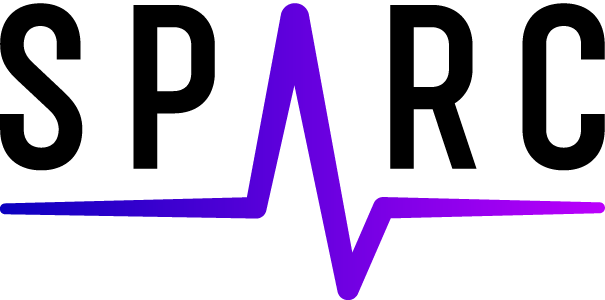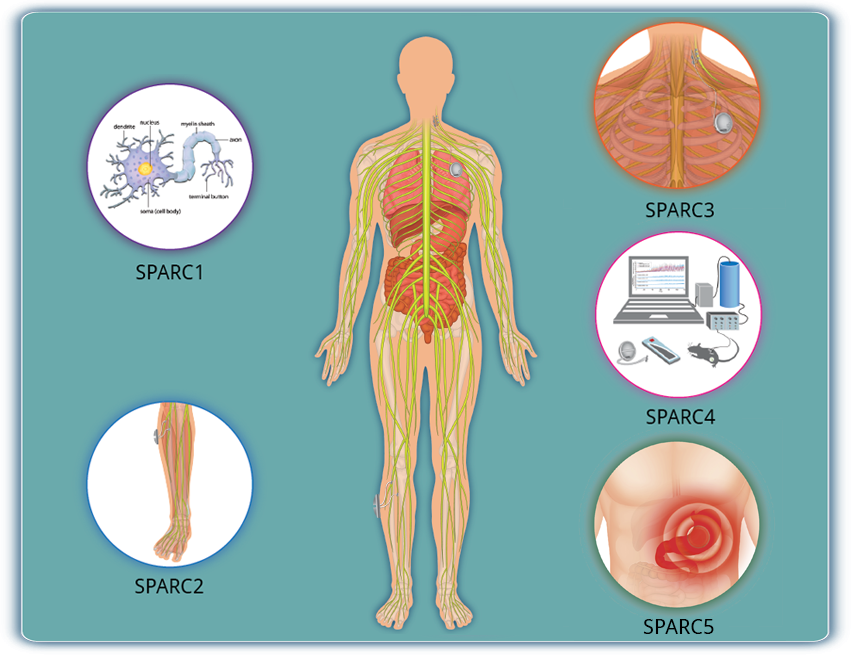SPARC4 (SP4)
Data and Resource Center
SPARC4 supports the creation of a multifunctional online hub facilitating coordination, synthesis, and prediction via three Core functionalities:
- Data Coordination Core [DAT-CORE] – Store, organize, manage, and track access to data and resources generated by SPARC.
- Map Synthesis Core [MAP-CORE] – Build interactive, modular, continually updated visualizations of nerve-organ anatomy and function.
- Modeling and Simulation Core [SIM-CORE] – Develop an online framework capable of hosting and connecting simulations to create predictive, multiscale, multiphysics models spanning from modulation sources acting from feasible access points to organ functional responses.
The Data and Resource Center (DRC) will host an interactive atlas of human and selected animal peripheral nervous systems, spanning from the end organs under study in SPARC to potential neuromodulation intervention points. Atlas users will be able to design and place nerve stimuli and observe predictions of their end effects at multiple organs, while accounting for user-defined anatomical and physiological parameters. The system will be able to offer a readout of which input uncertainties drive the output uncertainty, providing guidance for where repeated measurements and new experiments are needed.

Funded investigators closely coordinate with the DRC to achieve the following:
- Integrate data to generate detailed, predictive, functional and anatomical neural circuit maps for major organs and their functionally-associated structures;
- Develop techniques and evidence-based approaches that will allow the research community to interactively access these maps;
- Develop therapeutic approaches for disease conditions.
Other activities will include but are not limited to: development of informatics tools, development of ontology and provenance tools, development of standards, curation of data, development or adaptation of common data elements, maintenance of documentation and protocols regarding tools and technologies developed by or brought into the SPARC program, promoting and facilitating data upload and release, and providing a mechanism to protect patient rights and data.
View SPARC4 funded research here.




